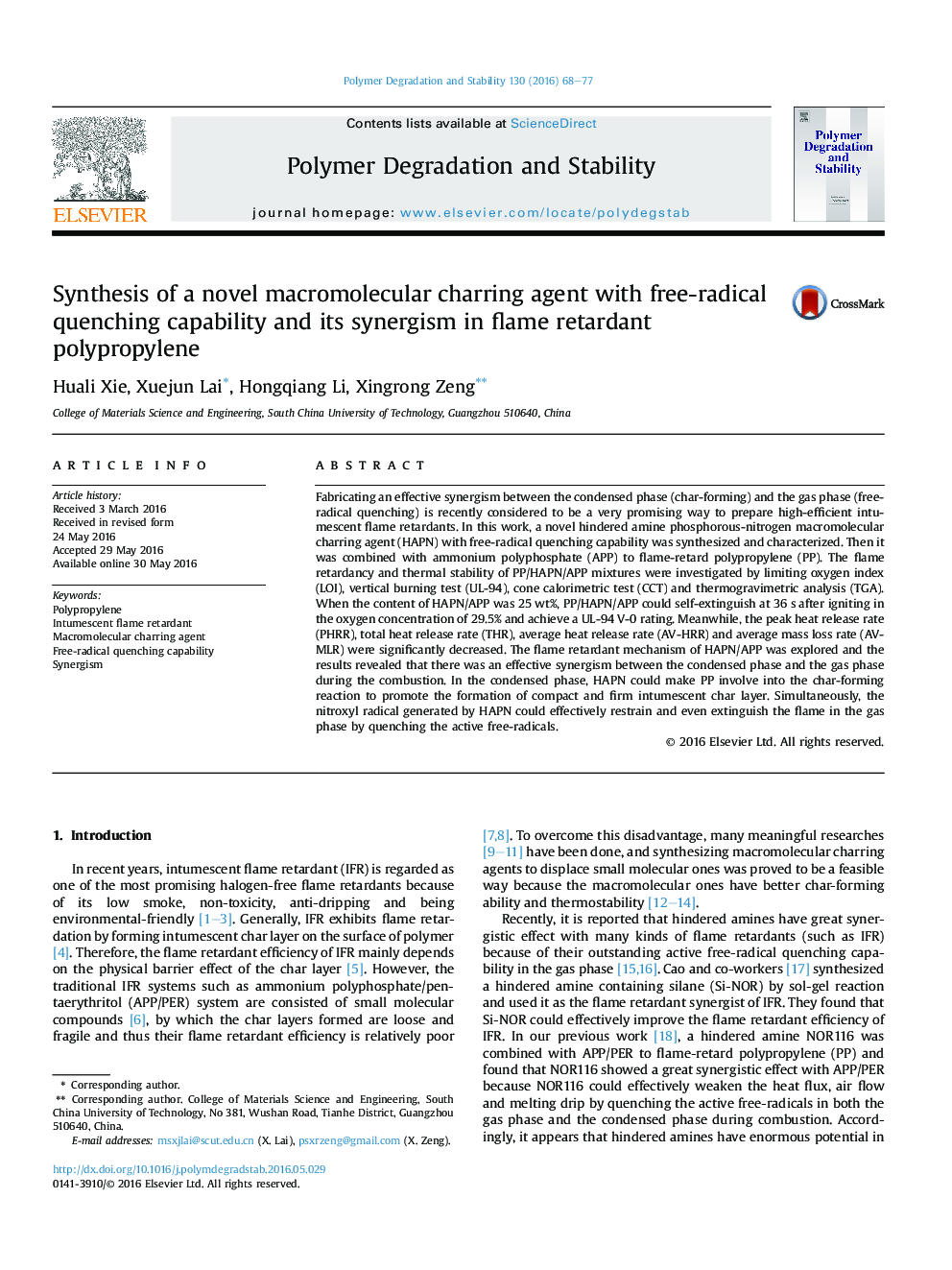| Article ID | Journal | Published Year | Pages | File Type |
|---|---|---|---|---|
| 5201064 | Polymer Degradation and Stability | 2016 | 10 Pages |
Abstract
Fabricating an effective synergism between the condensed phase (char-forming) and the gas phase (free-radical quenching) is recently considered to be a very promising way to prepare high-efficient intumescent flame retardants. In this work, a novel hindered amine phosphorous-nitrogen macromolecular charring agent (HAPN) with free-radical quenching capability was synthesized and characterized. Then it was combined with ammonium polyphosphate (APP) to flame-retard polypropylene (PP). The flame retardancy and thermal stability of PP/HAPN/APP mixtures were investigated by limiting oxygen index (LOI), vertical burning test (UL-94), cone calorimetric test (CCT) and thermogravimetric analysis (TGA). When the content of HAPN/APP was 25Â wt%, PP/HAPN/APP could self-extinguish at 36Â s after igniting in the oxygen concentration of 29.5% and achieve a UL-94 V-0 rating. Meanwhile, the peak heat release rate (PHRR), total heat release rate (THR), average heat release rate (AV-HRR) and average mass loss rate (AV-MLR) were significantly decreased. The flame retardant mechanism of HAPN/APP was explored and the results revealed that there was an effective synergism between the condensed phase and the gas phase during the combustion. In the condensed phase, HAPN could make PP involve into the char-forming reaction to promote the formation of compact and firm intumescent char layer. Simultaneously, the nitroxyl radical generated by HAPN could effectively restrain and even extinguish the flame in the gas phase by quenching the active free-radicals.
Related Topics
Physical Sciences and Engineering
Chemistry
Organic Chemistry
Authors
Huali Xie, Xuejun Lai, Hongqiang Li, Xingrong Zeng,
